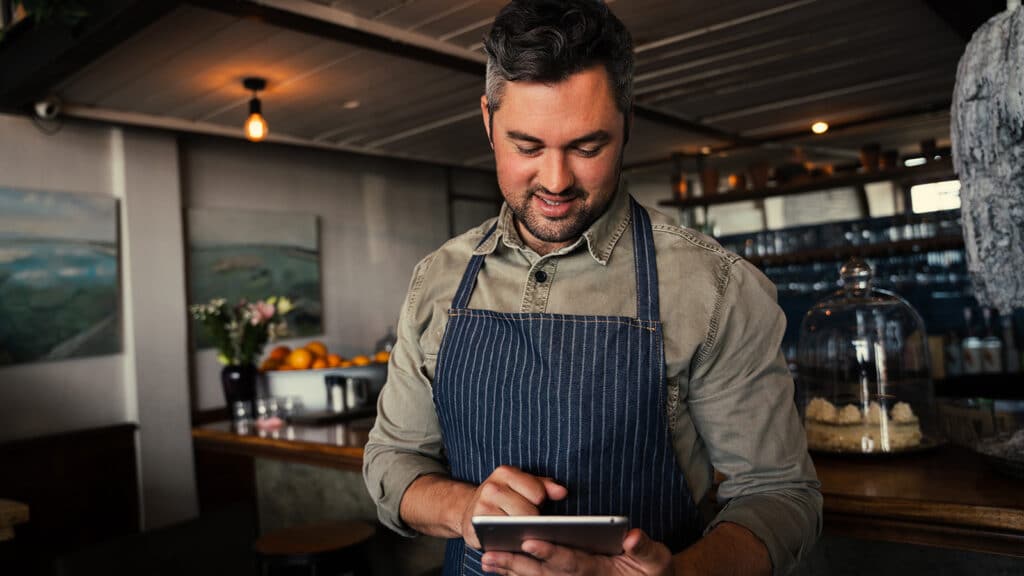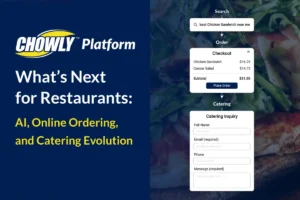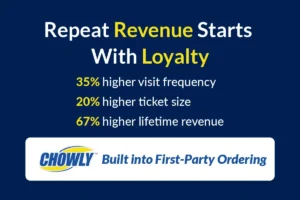As off-premise restaurant trends dominate headlines with ideas like drone-delivered pizza, it’s tough to distinguish reality from clickbait. The Virtual Kitchens (or Dark Kitchen), however, are the real deal, and a business model hospitality leaders should consider.
What is a dark kitchen? They’re spaces, new or existing, that restaurants can leverage to boost business, specifically focusing on food delivery and quick-service sales. Existing restaurants and aspiring chefs alike are beginning to discover how this model could revolutionize food delivery and their bottom lines.
By setting up dark kitchens, restaurants can do more business, with little risk, few new costs, and unprecedented flexibility.
There are a few types of dark kitchens, each suited to a different restaurant model. Below is a breakdown of the three most common:
Pop-Up
Looking to experiment with a new concept in your kitchen — a new category of menu items or specials? Rather than add those items to an already crowded menu, create a delivery-only pop-up dedicated to them. Pop-ups require little investment to launch, as they utilize existing kitchen capacity. Restaurants with enough space, staff, and capital can use those resources to create a new, delivery-only brand, right in the same kitchen. Unlike pop-up restaurants, these pop-ups are not limited by time or theme.
Features:
- Limited menu
- Existing cooks
- Same kitchen
Best for:
- SMBs
If a restaurant delivers via third-party marketplaces, has extra kitchen capacity, and the margins make sense, creating a pop-up is a good strategy. The risk of starting these businesses is low, since you’ve already invested the capital, and rewards can be significant. Using third-party marketplaces’ platforms, restaurants can experiment with new brands and adjust as needed.
For customers ordering delivery, the experience doesn’t change — they order from a restaurant, the restaurant makes the food, and the food gets delivered. It’s simply a new restaurant name and menu. For restaurants, there’s also little change — the staff makes some additional food, packs it, and hands it to a different delivery driver. This allows restaurants to test different items, styles, and price points without spending on new real estate or employees.
Commissary
Currently the most popular of the three, this model is a delivery-only food commons, operated by a company or third-party marketplace.
Though there are still some issues to resolve with this model — particularly business sustainability — various companies have seen success thus far.
Features:
- Multi-concept space
- Multiple kitchens
Best for:
- Operators
With commissaries, companies or third-party marketplaces obtain real estate, create multiple kitchen spaces, then invite restaurant operators to make each into a delivery-only concept. Those looking to capitalize on the consumer-driven delivery hyper-growth can quickly spin up and down concepts within their spaces.
Pod
The newest of the three, the “pod” is a kitchen inside a storage container, which can be placed nearly anywhere, then set up to provide food via drive-thru or delivery to the surrounding area.
Given its newness, this model hasn’t been executed on a large scale. Yet, with the flexibility they provide, it’s only a matter of time before pods start appearing everywhere.
Features:
- Storage container with fully functional kitchen
- Targeted location
- Small footprint
- Delivery or “drive-thru”
Best for:
- Chains known in the area (but without nearby locations) or emerging restaurant brands
With pods, restaurants can position themselves in optimal locations for taking orders, without establishing new storefronts. Pods can be dropped anywhere zoning allows, but should be in locations well-targeted for fulfilling delivery or drive-thru orders. This enables quicker service to areas that could increase revenue. Enterprise businesses or emerging restaurant brands with capital partners familiar with demographic targeting can leverage this model. Such businesses, which may have name recognition in a specific area, but lack nearby locations, are best positioned to profit from this strategy.
With third-party delivery marketplaces’ continued expansion into suburban and rural areas, it’s clear that the way Americans interact with restaurants is changing. To keep up with these changes, restaurants that work with these third parties and have kitchen capacity should consider dark kitchens. With third parties creating volume for restaurants by helping with marketing, and technology solutions available to help keep operational changes minimal, dark kitchens are food delivery’s next evolution. Which option is the right fit for your business?
About the Author: Sterling Douglass is the CEO & Co-Founder of Chowly, a restaurant technology company that integrates third-party online ordering platforms with restaurants’ point of sale (POS) systems. Sterling is a natural at bringing people together, and his ability to develop and grow a team has enabled him to thrive as an entrepreneur. With a focus on lean startups, and foundation in data analytics, Sterling takes challenges head on and doesn’t let any obstacle stand in his team’s way.
This article originally appeared in Hospitality Technology.



